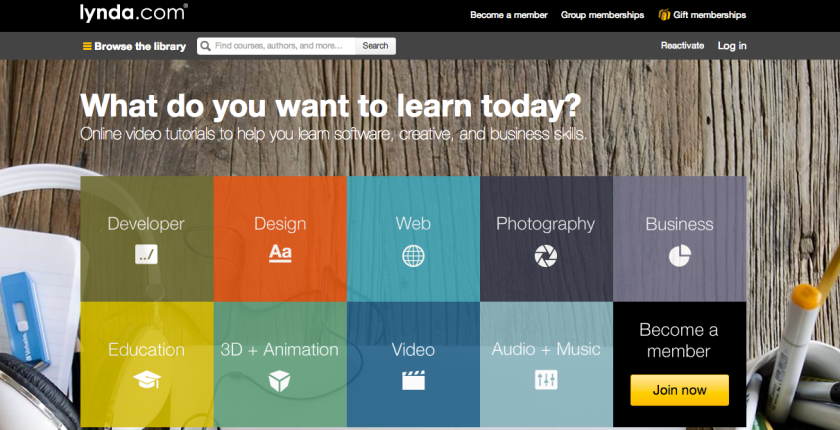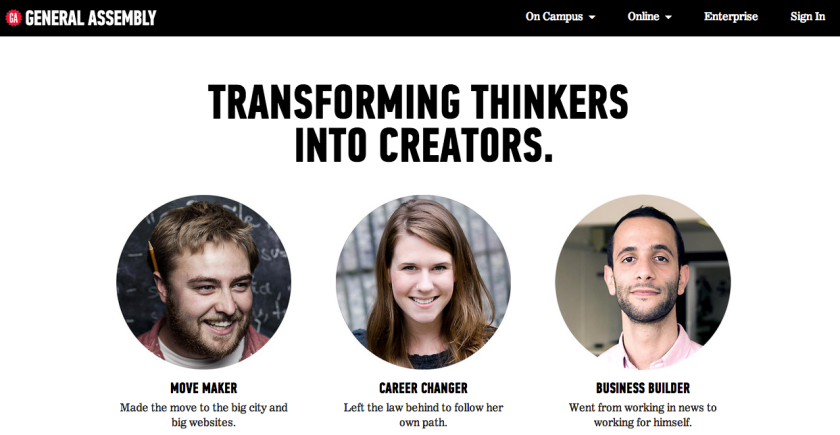“Lifelong learning has moved from a buzzword to reality, yet colleges still think of higher education as something that happens at one time in a person’s life, in one place.
For colleges to prove the lifetime value of their expensive style of education in a world of increasing options, they need to start extending different styles of learning, to different segments of students, beyond commencement day.”
Several different options have risen as an alternative to the traditional colleges and universities. Self-learned has never rang so true as now.
The options are digital platforms that are accessible and easy to use when you have the time, you can decide exactly what you want to learn and stop it anytime you want without getting a hefty student loan as a memory.
It’s a good step from the “one school fits all” formula but does require discipline and a change of perspective to realise that lifelong learning is the official way to learn and prosper in a world that will crave you to acquire new skills on a reoccurring basis.
BUT
Would it not be wonderful if the public schools became a place where you start off and learn lifelong soft skills, among them sexuality and intimacy and expressing feelings, and all the hard skills where learned only when needed, like stated in “To Reach the New Market for Education, Colleges Have Some Learning to Do“, in just-in-time education.
I think I could go for trying that new form of educating.
Until then, here are some examples of the platforms:

Lynda.com is an online learning company that helps anyone learn software, design, and business skills to achieve their personal and professional goals. With a lynda.com subscription, members receive unlimited access to a vast library of high quality, current, and engaging video tutorials. New courses and topics are added every week at no extra cost. We carefully select the world’s top experts who are the best in their field, passionate about their subject matter, and know how to teach. – Around 4 million students, yep.
Coursera is an education platform that partners with top universities and organizations worldwide, to offer courses online for anyone to take, for free.
We envision a future where everyone has access to a world-class education. We aim to empower people with education that will improve their lives, the lives of their families, and the communities they live in. – Around 7 million students, yep.
Khan Academy is an organization on a mission. We’re a not-for-profit with the goal of changing education for the better by providing a free world-class education for anyone anywhere. All of the site’s resources are available to anyone. It doesn’t matter if you are a student, teacher, home-schooler, principal, adult returning to the classroom after 20 years, or a friendly alien just trying to get a leg up in earthly biology.
Khan Academy’s materials and resources are available to you completely free of charge.
Around 10 million students, yep.
At General Assembly, we are creating a global community of individuals empowered to pursue work they love, by offering full-time immersive programs, long-form courses, and classes and workshops on the most relevant skills of the 21st century – from web development and user experience design, to business fundamentals, to data science, to product management and digital marketing.
Established in early 2011 as an innovative community in New York City for entrepreneurs and startup companies, General Assembly is an educational institution that transforms thinkers into creators through education in technology, business and design at nine campuses across four continents. – Startup with around 100 000 students and counting.

Skillshare is an online learning community to master real-world skills through
project-based classes. Our mission is simple: provide universal access to high-quality learning. – Startup with around 45 000 students and counting.
Today, 3 million students in 190+ countries are taking online courses on Udemy. They’re learning Programming, Yoga, Design, Photography, Spanish, Marketing, Guitar, Finance, Cake Decorating, and so much more.
More than 16,000 courses (in 10 different languages!) have been published in our marketplace. Each course is designed & taught by an expert instructor and hundreds of new courses are published every month.
More:
http://www.codecademy.com/
http://www.saylor.org/
http://sxswedu.com/










